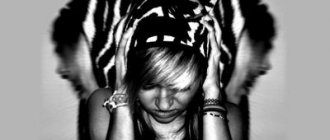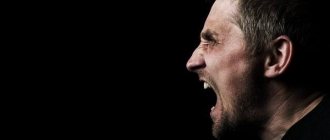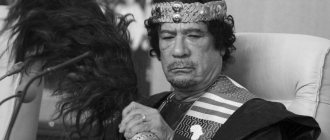Deviant behavior and its causes, types, functions
Deviant (deviant) behavior is the motivational actions of an individual, which are fundamentally different from generally accepted values and rules of behavior in society, formed in a given culture or state.
It is represented by a social phenomenon that is reflected in mass forms of life and does not correspond to generally accepted rules of behavior. The criteria for deviant behavior are represented by moral and legal regulations. Delinquent behavior is represented by criminal behavior, which refers to illegal acts.
Literary examples
If you are interested in examples of deviant behavior, you can learn a lot of interesting things from the literature. Here are the most striking of them:
- Raskolnikov from Dostoevsky’s “Crime and Punishment” demonstrates an example of deviant behavior. For the sake of material gain, he decides to kill.
- Chatsky’s behavior in the play “Woe from Wit” by Griboyedov. This character is sometimes hot-tempered and completely tactless. He acts as an exposer of other people's vices, as well as a strict judge of moral principles.
- In Tolstoy's novel Anna Karenina, the main character can also be cited as an example of deviant behavior. Adultery, extramarital affairs, and suicide are the clearest signs.
- In Makarenko’s “Pedagogical Poem,” almost all the orphanage students in one way or another personify deviant behavior. This work is interesting primarily because the talented teacher managed to correct the situation.
- The hero of Balzac's "Gobsek" is a rather interesting example of deviant behavior. A greedy moneylender has a pathological tendency to accumulate. As a result, in his closet they find a huge amount of material assets, as well as food that has simply spoiled.
Types of deviant behavior
- The primary stage of deviation is when a person allows himself to violate generally accepted norms of behavior, but does not consider himself a violator. The secondary stage of deviation - a person falls under the image of a deviant, society treats violators differently from ordinary citizens.
- Individual and collective type of deviation. Often, an individual form of deviant behavior develops into a collective one. The spread of violations is characterized by the influence of subcultures, the participants of which are represented by expelled individuals from society. Individuals predisposed to violating social rules are a risk group.
Diagnostics
If there are suspicions that a child is increasingly showing himself as deviant, he needs to be shown to a psychologist. He carries out primary diagnostics using questionnaires and tests. The most common of them:
- method of express diagnostics of intellectual abilities;
- methodology for diagnosing socio-psychological adaptation (Rogers and Diamond);
- for younger schoolchildren - projective techniques;
- technique for identifying frustration (Rosenzweig);
- method for determining the level of school anxiety (Phillips);
- Manipulative Attitude Scale (Banta);
- aggressiveness test (Bassa-Darki)
- Internet addiction test (Nikitina, Egorov)
- Schulte tables;
- Luscher technique;
- Wechsler scale;
- test for self-assessment of mental states (Eysenck);
- Stott sighting map.
There are a huge number of diagnostic methods. Experts select them in accordance with each specific situation.
Types of deviant behavior
Socially approved - have a positive impact, directing society to overcome outdated norms of behavior and values that contribute to a qualitative change in the structure of the social system (genius, creativity, achievements, etc.).
Neutral – not bearing noticeable changes (clothing style, eccentricity, unusual behavior).
Socially disapproved – changes that bring negative consequences to the social system, resulting in dysfunction; destruction of the system, provoking deviant behavior that harms society; delinquent behavior; personality destruction (alcoholism, drug addiction, etc.).
Functions of deviants in society
- Rallying action in society, based on understanding oneself as an individual, the formation of personal values.
- Forms of acceptable behavior in society.
- Violators are presented as safety valves of the state, which relieve social tension in difficult situations of the state (for example, during the Soviet era, scarce goods and products were replaced with drugs that relieve psychological stress).
- The number of violators shows an unresolved social problem that needs to be combated (the number of bribe takers leads to the creation of new anti-corruption laws).
Typology of deviant behavior
found expression in the works of Merton, who represented deviation as a gap between cultural goals and approved behavior in society. The scientist identified 4 types of deviation: innovation – denial of generally accepted methods of achieving goals; ritualism - denial of goals and ways of achieving in society; retreatism - separation from reality; rebellion is a change in generally accepted types of relationships.
Main reasons
Unfortunately, psychologists still cannot accurately determine the range of reasons that provoke deviant behavior. The examples provide only a rough list. It looks like this:
- inconsistency between the goals set and the available means that can be used to achieve them;
- a decrease in the level of society's expectations from a particular individual, which gradually leads to marginalization;
- addiction to alcohol and drugs, deterioration of the genetic fund and other social pathologies;
- mental illnesses of various types;
- lack of clear motivation that would allow one to accurately determine adequate actions for a specific situation;
- social inequality and injustice that encourage aggression;
- armed conflicts, man-made disasters and natural disasters that disrupt the human psyche.
Theories of the origin of deviant and delinquent behavior
- The theory of physical types - the physical characteristics of a person influence deviations from generally accepted norms. So Lombroso in his works argued that deviant behavior is a consequence of the biological characteristics of the individual. Criminal behavior has its origins in the regression of the human personality to the primary stages of evolution. Sheldon believed that a person’s actions are influenced by 3 human traits: endomorphic type - a tendency towards fullness and roundness of the body; mesomorphic type – athletic build, wiry; ectomorphic type – tendency towards thinness. The scientist attributed deviant actions to each type, so mesomorphic types are prone to alcoholism. Further practice denies the dependence of physique and deviant manifestation.
- Psychoanalytic theory is the study of contradictory tendencies occurring in the mind of an individual. Freud argued that the causes of deviation are considered to be dementia, psychopathy, etc.
- Stigma theory - developed by Lemert and Becker. According to the theory, a person is labeled as a criminal and sanctions are applied.
- The theory of cultural transfer of deviance - this includes several theories. The theory of imitation - developed by Tarde, according to the concept - people from an early age find themselves in a criminal environment, which determines their future future. Differential association theory - developed by Sutherland. According to the theory, a person’s behavior directly depends on his environment; the more often and longer an individual is in a criminal environment, the greater the likelihood of becoming a deviant.
Sexual perversions (perversions) are painful disturbances in the direction of sexual desire and/or ways of satisfying it.
There are two groups of perversions:
1) associated with the direction of sexual desire;
2) is associated with the method of satisfying sexual desire.
Perversions are characterized by:
- Have an obsessive nature;
- Progress;
- Makes normal partnerships difficult;
- Periodically cause increasing sexual anxiety, anxiety, and depression;
- Lead to social isolation.
Extremely valuable psychological hobbies relate to personality accentuations : workaholism, collecting, fanaticism - religious, football, music, etc.
Kinds:
Workaholism is a person’s desire to work excessively, going beyond the scope of natural diligence. Workaholism is immersion in work, not for the sake of the result, but for the sake of the process. Workaholism is akin to addictive behavior, since immersion in work allows you to escape from reality.
Gambling is a gaming addiction.
Fanaticism – sports, religious, musical, etc.
Extremely valuable psychopathological hobbies are a distortion of normal behavior caused by delusional ideas: reformism, invention, greatness, litigiousness. This also includes various manias: kleptomania, dromomania, pyromania, etc.
Varieties of overvalued psychopathological hobbies
The syndrome of “philosophical intoxication” occurs, as a rule, in adolescents with schizophrenia. An increased interest in philosophical, theosophical and psychological literature with an urgent need to analyze the events taking place around the individual, as well as one’s own inner world, acts as a kind of hobby.
Dominant (overvalued) or delusional ideas. For example, the idea of one’s own high origin, the idea of other people’s parents, reformation and invention, etc.
Pathological fascination with litigious activities, querulantism. Characteristic is an irresistible desire to complain to various authorities and for any reason. A querulant is a person with a heightened sense of justice, who wants to achieve the truth even in small things, but does not weigh real negative facts and ways to combat them.
Disorders of desires, which are manifested by pronounced deviations in behavior. These include kleptomania - an irresistible urge to commit thefts, pyromania - an irresistible urge to commit arson, dromomania - vagrancy, dipsomania - binge drinking.
Obsessive rituals are intractable motor acts performed against the will and internal resistance of the individual, symbolically expressing the hope of preventing a perceived misfortune.
Pathocharacterological reactions occur in individuals with personality disorders. A person with a character pathology develops a stable pattern of behavior. For example, a refusal reaction is a refusal to have any contact with others. The reaction of the opposition is deliberate rudeness and disobedience.
Options:
The reaction of refusal to communicate is due to fear or deprivation of a familiar environment.
The reaction of the opposition is rudeness, disobedience, abuse, threats.
The imitation reaction is blind imitation of someone.
The grouping reaction is a search for protection and removal of responsibility in the group.
The overcompensation reaction is a persistent desire to overcome failure in the same area.
The emancipation reaction is a protest against established rules, joining extremist movements.
Communication deviations are communication disorders. They accompany almost any type of deviation. These include: hyper sociability, complete refusal to communicate, choice of loneliness, jealousy, nihilism, pseudology - untruthful statements, flattery, etc.
Hyper sociability – increased talkativeness, the desire to communicate with many people at the same time.
Autism is a complete refusal to communicate, a choice of loneliness.
Pseudology is the desire to use false statements.
Jealousy can be based on real facts, or it can be a crazy idea.
Nihilism is the desire to criticize everyone and everything.
Immoral and immoral behavior is a violation of the norms of ethics and moral values accepted in society. Behavior that contradicts the moral principles of society is considered immoral, regardless of how the subject himself evaluates it.
Unaesthetic behavior is characterized by indifference and rejection of beauty, harmony, symmetry: sloppiness, sloppiness, uncleanliness, bad manners at the table, in communication, caricature of movements and facial expressions, rude speech style, cynical statements, etc.










